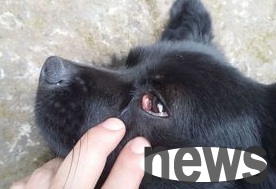Like humans, dogs' eyeballs are similar to spheres, located in the orbits, connected to the brain by visual nerves. The eyeball is composed of the outer ball wall and the contents of the eyeball inside. Specifically, it includes the cornea, scle...
Like humans, dogs' eyeballs are similar to spheres, located in the orbits, connected to the brain by visual nerves. The eyeball is composed of the outer ball wall and the contents of the eyeball inside. Specifically, it includes the cornea, sclera, iris, ciliary body, choroid, retina, optic nerve, lens and vitreous body.
The eyeball structure is similar to that of a camera, but its functions are much more precise and accurate than that of a camera. The eyeball can feel countless impact stimulations in an instant and can quickly transform into a series of visual signals.

Dog vision
In the dark, dogs have better vision than humans, partly because there are a large number of visual stem cells that are sensitive to weak light on the dog's retina, and partly because there is a "transparent blanket" behind the visual stem cells, which can reflect the gathered light back, which will be of great help to wild dogs that may prey in the faint light. Dogs are particularly sensitive to distant moving targets and are relatively dull to static targets, which helps hunt, but also makes some dogs appear clumsy.
Dog's field of vision The dog's eyes are positioned on the head and accompanied by muscles that make the eyeball rotate flexibly, which gives the dog a very wide field of vision. Different shapes of dog heads determine different eye positions and also lead to differences in vision between different dog breeds. Generally speaking, short-headed (short-nosed) dogs, such as Kyoba and Bulldogs, have eyes directly in front of the head, which gives them a better view overlap in the field of view than a proboscised dog. The eyes of the

long-headed (prolong-nosed) dog breeds are inclined, and the overlapping area of the field of view is small. Except for a small area directly in front, in most of the field of view, the probossed dogs can hardly form three-dimensional images. This may be why some excellent visual hounds (such as the Soviet Shepherd and Saluki Hound) will fall into the ditch when they rush at full speed or trip over some small obstacles. For humans, the field of view of the two eyes overlaps greatly, so we can see stereoscopic images and have accurate estimates of depth and distance. Although dogs have a wide field of vision, their judgment of distance is not accurate.